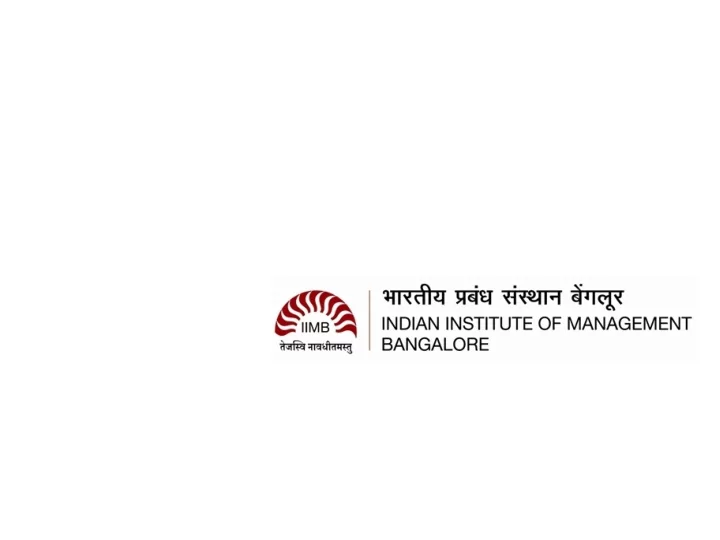

Microfinance in India – The road traversed and what lies ahead Rajalaxmi Kamath & P C Narayan 6th November, 2017
1969 – Nationalization of Banks • 100% government ownership of large banks • State directed lending • Increased access of banking services to semi-urban and rural population
1970s to mid 90s: Supply driven measures • New Institutions – National Bank for Agriculture and Rural Development (NABARD), Regional Rural Banks (RRBs), Local Area Banks (LABs) • Targets/quota (rural branches, priority sector lending, ‘loan-melas’) • Interest rates determined by the State/Reserve Bank of India (RBI) • Second tranche of bank nationalization
Post 90s: Onus on demand driven measures • Indigenous microfinance model : The ‘Self-help Group - Bank Linkage Programme’ Model (SHG-BLP) § promoted by NABARD. Banks played a passive role, through the SHG-BLP model or through § ‘outsourcing’ route (Banking Correspondents and Banking Facilitators) NGOs, Societies, Trusts, section 25 companies, mainly non-profit entities § (MFIs as ‘for profit’ entities. Example: Non-banking Finance Companies) • Reduction in equity stake of the govt. (from 100% to 51%) in public sector banks (PSB), worked against the ‘financial Inclusion agenda’. § Compensated by encouraging private and non-formal actors into the microfinance arena – ‘SHG Bank Linkage’ model and the ‘Microfinance’ model being the two workhorse models.
SHG-BLP versus MFIs SHGs linked to Banks MFIs Simple rules Intricate rules • • Savings – the starting point No savings motive • • Credit, loan repayments – Credit, loan repayments, • • flexible, renegotiable terms – rigid rules Access to full range of Limited to services offered • • banking services by the MFI Need hand-holding, mgmt & Accounts maintained by the • • accounting skills MFI field worker Sustainability and self- Sustainability and self- • • sufficiency for the group sufficiency for the institution
SHGs versus MFIs SHGs MFIs • Lack of a bank network • Existing bank network • Very poor, homogenous • Diffused communities, communities castes, wealth levels • Few informal credit • Tradition of informal mechanisms financial Services • Large number of small • Some local leadership business opportunities • NGOs and committed bank • Few NGOs staff Source: “Self Help Groups and Grameen Bank Groups: What are the differences”, Malcolm Harper in Beyond Micro-Credit – Putting Development Bank into Microfinance – Thomas Fisher and M.S.Sriram (eds).
How different is the the Grameen type Microfinance Institutions (MFIs) from SHGs? SHGs MFIs + / - Interest rates and loan + / - Flexible (mini bank by itself) conditions inflexible and rigid + / - Need management, skills and time; depend on good accounts + / - No need for literacy or for member initiatives; accounts + Can access full range of banking kept by the MFI staff services - Pressure to borrow Can be captured internally or • externally + Protected from internal and + Highly empowering (credit Plus ) external capture; belong to and are supported by the MFO Only credit disbursements §
2000 – 2010: Crises in the microfinance sector • High returns ~ rapid growth • Pressure on the for-Profit MFI model – The ICICI bank “distributor” model – Crisis in the MFI sector of Andhra Pradesh (Andhra Crisis) • SHG-BLP plateauing • Entry of Venture Capital firms, Angel investors and public listing of MFIs
Equity deals in 2009–10 by class of investors Mainstream investors Microfinance investors Name Amount US$ Name Amount US$ Temasek 5,00,00,000.00 Dia Vikas 31,50,000.00 Blue Orchard 1,03,34,849.00 Bellwether 4,79,581.00 Sequoia 94,00,000.00 Microvest Capital 45,00,000.00 Treeline Asia 1,00,00,000.00 Accion Gateway 5,00,000.00 Individuals 3,19,006.00 Microventures 34,649.00 Catamaran Venture 60,99,783.00 DWM Investment 2,08,45,986.00 IFC 5,78,00,000.00 Unitus Equity 42,50,000.00 Aavishkaar Goodwell 9,30,521.00 Incofin 18,04,522.00 Bajaj Allianz 1,00,00,000.00 Lok Capital 15,00,000.00 India Microfin Dev Co 1,00,00,000.00 SIDBI 1,07,27,311.00 Total 15,48,84,159.00 Total 5,77,92,049.00 Share 72.8 per cent Share 28.2 per cent
Post 2010 • On-tap licenses to differentiated Banks – Small Finance Banks (SFBs) and Payment Banks – For-profit MFIs became SFBs (eg: Ujjivan, Equitas) • Banks once again emerge as conduit for financial inclusion, albeit in modified forms – Pradhan Mantri Jan Dhan Yojana (PMJDY)
Mainstreaming Financial Inclusion - The Big Question…. • Can ‘Financial Access’ guarantee ‘Financial Inclusion’? • If yes, how?
Our proposed study and methodology • Study one typical extant organizational form (banks, others) to compare and contrast their delivery modes of financial inclusion. – Methodology: case studies • Do we see mimetic patterns? And therefore, can we formulate a map of the future financial inclusion scenario, based on the above studies? • Primary survey of a purposeful set of customers of some of these organizations to understand the needs of (a) the financially excluded (b) those having access but not included (c) small ticket borrowers (SMEs and petty loans). – Methodology:- surveys, focus group discussions
Thank You. Questions?
Recommend
More recommend